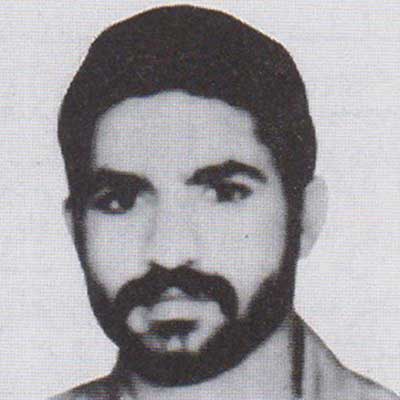Arman, Muhammad
Masoumeh Abedini
298 بازدید
Muhammad Arman (1964–1987) served as the deputy commander of the Khyber Engineering Battalion of Jahad Sazandegi Kerman during the Sacred Defense. He was born in Jiroft in 1964. His father was a laborer struggling to support a family of seven. When Muhammad was two years old, the family left Jiroft for the village of Dasht-e Kuch due to financial difficulties. When he turned six, his father took him and his two older brothers back to Jiroft so that they could attend school. During this time, his father passed away making life extremely difficult for the family. Thanks to his mother's support him working whilst studying, he was able to graduate from Elementary and middle school.
When he was a teenager, his teacher encouraged him to participate in some of the activities organized by one of the local mosques in Jiroft. He took up the responsibility of distributing pictures of Imam Khomeini (ra) in the mosque Together with his brother, Muhammad made the people of Dasht-e Kuch aware of the ongoing anti-Pahlavi demonstrations which inspired them to close a liquor store in Jiroft.
His favorite sports were football and wrestling the latter of which he significantly excelled at.
After the victory of the Islamic Revolution, Muhammad became an active member of the Islamic Republican Party of Jiroft; often working late at the party headquarters.
When Muhammad Arman was a freshman in high school, the Iran-Iraq war had been raging for more than a year. He joined the Basij and was deployed to Khuzestan to take part in Operation Fath al-Mubin. It was in that operation where he was injured by shrapnel and his RPG backpack catching fire. He was taken to a hospital in Yazd. After a partial recovery, Muhammad returned to Jiroft for further treatment and became a member of the Jahad Sazandegi of the Kerman Province.
Muhammad repeatedly went to the front lines, serving in various roles. He was a radio operator in Operation Ramadan, a volunteer in Operation Valfajr, and a courier in Operation Kheyber during which he was injured again. He also took part in other operations including Badr, Valfajr 8, and Karbala 5. When the Engineering Unit of Jahad Kerman was tasked with conducting important operations in Shalamcheh, Muhammad Arman was appointed as the logistics deputy commander.
He had a bold and fearless spirit. On Majnoon Island, despite his responsibilities and the ongoing war, he engaged in road construction activities boosting the morale of other soldiers and volunteers.
According to his friends and fellow soldiers, Muhammad was an exceptional individual in the war. In addition to fulfilling his responsibilities, he sometimes acted as a medic, an ambulance driver, or took on any other necessary role.
Due to serving on the front lines for a long time, Muhammad Arman developed a peculiar skill in tracking bullets by listening to their whistling sound, about which many stories have been documented.
He pursued his education during the summers or any other time and finally earned a diploma in economics. In 1985, he studied in the seminary of Qom for a short period. Muhammad got married in late 1986 and returned to the front lines two weeks after his wedding.
Once he was offered the position of head of agricultural services in Jiroft after being wounded in the war, however, after consulting with the Jahad Sazandegi authorities in the county, he declined the offer and went back to the front lines. On November 28, 1987, while Muhammad Arman was building a road ahead of the trenches in Majnoon Islands he was hit by a tank shell and was martyred.
He had taken his wife, sister (along with her family), and child to Ahvaz before his martyrdom. One day before his martyrdom, Muhammad Arman returned home and took his only child, Reza, who was a few months old, to the headquarters so that his comrades could see him. When he came back, he sat with his family and asked them to take care of his mother. It is said that his last words at the time of his martyrdom were, "O Zahra" (Peace be upon her).[1]
[1] Reference: A Summary of an article published in the Sacred Defense Encyclopedia, Vol. 1, Tehran, The Center of Encyclopedia of the Sacred Defense Research Institute, 2011, Pp. 141-142.



